ON THE MENU:
I create beading patterns and tutorials.
Then I bead them.
When I'm not, I’m probably thinking about it. Or avoiding blue.
Oh, and I try to write.
– Dorota
Crafty Bead / Always allergic to boring patterns
WHAT'S IN THE BOX?
FOLLOW ME
MORE STUFF TO READ
My Beading Stash, Part 1: The Holy Trinity (beads, thread & needles)
Let’s be honest. When you start your beading adventure, you read and you hear things. "You must use this," "you have to try that." The sheer volume of advice can be overwhelming, and the journey to find what truly works for you is a process of trial, error, and sometimes, happy accidents.
And this journey taught me a valuable lesson: the right tools don’t just make your beadwork look better, they make the process a joy. This article is my personal, battle-tested guide to the "Holy Trinity" of beading: the beads, threads, and needles I adore, the ones I tolerate, and the ones I’ve dumped. I hope it saves you some time, money, and a bit of sanity.
(Heads up: Some links in this article are affiliate links. This means if you buy something, I might get a small commission for more beads, at absolutely no extra cost to you. I only recommend what I personally use and love!)
________________________________________
👑 Chapter 1: The Soul of the Project – The Great Bead Revelation
For a long time, I kept reading that everyone was using Miyuki Delica beads. I’d roll my eyes a little. They were everywhere, and I was perfectly happy with my TOHO Round beads - they were cheaper and very popular in my country. I was convinced they were the best.
So, I finally decided to order a few colors of Delicas, mostly with the secret intention of debunking the myth surrounding them.
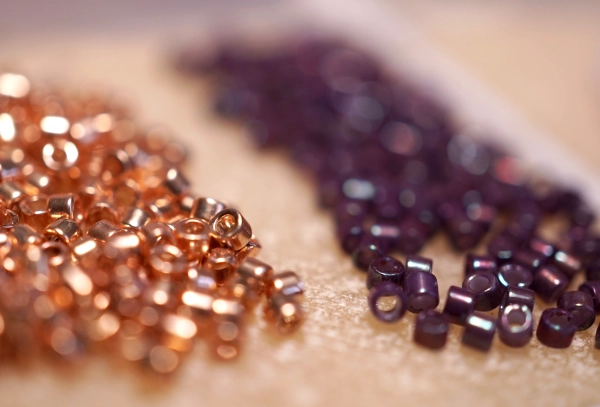
I surrendered after the first few rows. It felt like I had been beading in the dark, and suddenly, someone turned on the sun. The way the Delicas, thanks to their perfect cylindrical shape, fit together… I was amazed. The beadwork was so neat, so even, and the process itself was just incredibly satisfying. And then there was the click! - that perfect little sound a bead makes when it snaps into place. It was over. I was a convert.
That story is the perfect entry into my bead philosophy. So let’s break it down.
My Queen: Miyuki Delica
As you've gathered, Delicas are my sun, my superstar. Their uniformity is unmatched, which is why they create such a sleek, fabric-like finish in peyote stitch. They are a joy to work with.
A Little Secret: Mixing with Toho Treasures
I also have quite a few colors of Toho Treasures, and a few times, I’ve even mixed them with Delicas. I know many people claim you shouldn't do this because Treasures are microscopically larger. And they are. But these barely-visible irregularities, often noticeable only to the beader's self-critical eye, become a special feature of the piece. I'm not forcing anyone to combine them, but if you're tempted to see if it's possible - try it. You might just like the result.
 The Sentimental Favorite: Round Beads
The Sentimental Favorite: Round Beads
Sometimes I still go back to Round beads. I have a certain sentiment for them, and lately, I've been craving textures. The rounds, with their plump shape, provide plenty of it. And let's be real, they are so cute and round, like chubby little donuts. They’re a very pleasant change of scenery for the eyes and they just make me inexplicably cheerful.
I always reach for round beads when creating a looped or square edge for peyote, as they are perfect for adding extra embellishment. Mixing cylindrical and round beads in a flat peyote strap gives you a unique result. But such pieces look quite different and are often not desired because they can seem messy to some. However, rounds are excellent for many other stitches like tubular peyote, bead crochet, Cellini, or any variation of RAW. And, of course, for free beadweaving - works that are more whimsical and not necessarily made with regular stitches.
________________________________________
🧵 Chapter 2: The Skeleton of the Bracelet – The Thread
Not to bore you with all the technical aspects, I'll just say that there are mainly two types of beading threads on the market:
⬦ monofilament threads - which are made from a single fiber (e.g., Miyuki, K.O., One-G).
⬦ multifilament threads - which are the so-called braided or bonded lines (e.g., FireLine, WildFire, Nymo, S-Lon).

I've tried many threads, but ultimately, I stick with Miyuki or K.O. thread. I basically believe it's the same thread, just sold under different brand names. I love it for its suppleness and its lack of tendency to tangle, and every beader knows how much a tangled thread can ruin your life.
A quick tip: If your thread does get tangled, never pull it tight, or you'll have to cut it. It's best to try to maneuver the tip of your needle into the knot and try to loosen it with the fingernails of your other hand.
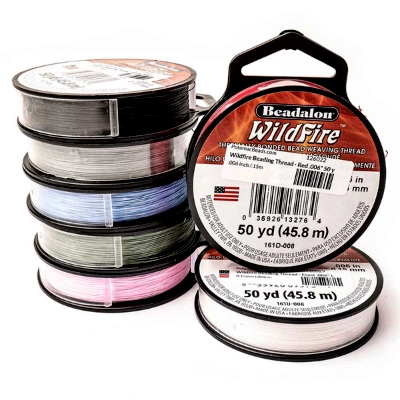
I also tried TOHO One-G thread; it's worse than Miyuki or K.O. but definitely better than Nymo or S-Lon, as those seem to be designed specifically to tangle, and untangling them requires otherworldly patience. If it's even possible at all.
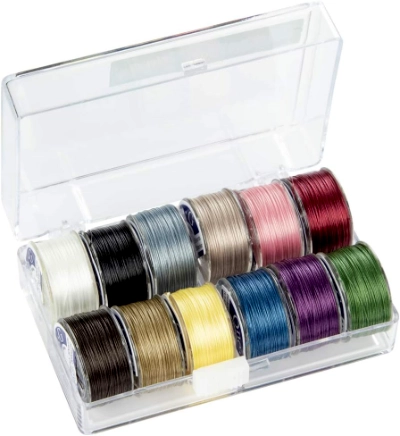
Many beaders use beeswax, synthetic wax, or a special thread conditioner to treat their thread. However, most popular threads don't require this, especially braided lines like FireLine and WildFire. These threads already have their own coating, which can be damaged by pulling it through a block of wax.
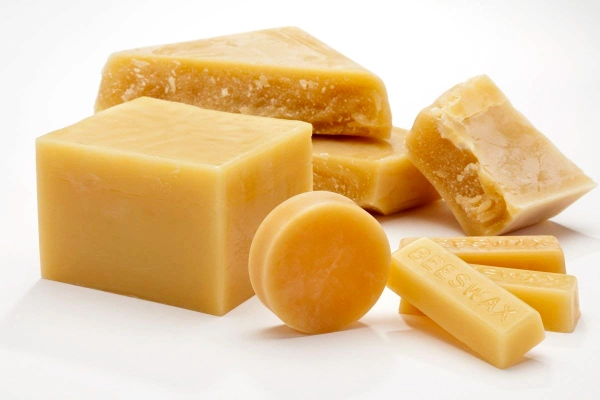
But if you feel you must wax your thread, remember that it makes the thread stiffer and stickier. Applying too much wax can cause it to rub off and leave small particles on your beads as you pull the thread through.
________________________________________
🪡 Chapter 3: The Magic Wand – The Needles
The variety of needles on the market is huge. It ranges from the most famous brands like John James, Pony, Tulip, Beadsmith, Beadalon or BeadTec, to cheaper, unbranded ones sold individually or in bulk.
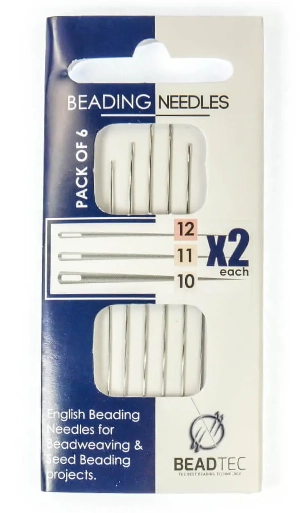
The most popular sizes are 10, 11, and 12. It's important to remember that the sizing system is inverse: a size 10 needle is thicker than a size 12. Of course, thicker and thinner sizes are also available.
As for the length - I LOVE long needles so I have one criterion: the needle must be long. Around 3 inches (7.5 - 8 cm) is my ideal.
Fortunately, needles are very cheap, so I suggest getting a few sizes and simply trying to see which one feels best in your fingers.
________________________________________
🎞️ Final Thoughts
At the end of the day, please remember - this is just my opinion. Everyone has a different one, and you will form your own. The ideal solution is simply to test things for yourself, because there is no single perfect starter kit for everyone.
But I hope my words at least help you get oriented in the market of basic beading accessories. The road ahead is only more exciting. I hope we meet on it someday.
And this is just the beginning! Stay tuned for Part 2 of My Beading Stash, where we'll dive into the world of beading mats, cutters, and other secret weapons that truly make the magic happen.
________________________________________
💬 And if you already have your Holy Trinity...
Now you have the theory, it's time for the glorious practice. Snag some of my easy patterns to get started. A fair warning: I'm not responsible for any new bead addiction that may occur 😎
Think advanced tips, hidden freebies, and bead-world chatter you won't hear anywhere else. You know what to do:
I don't follow trends, I craft them
CraftyBead.art — since 2022 and still waiting to be discovered 😏

 The Sentimental Favorite: Round Beads
The Sentimental Favorite: Round Beads